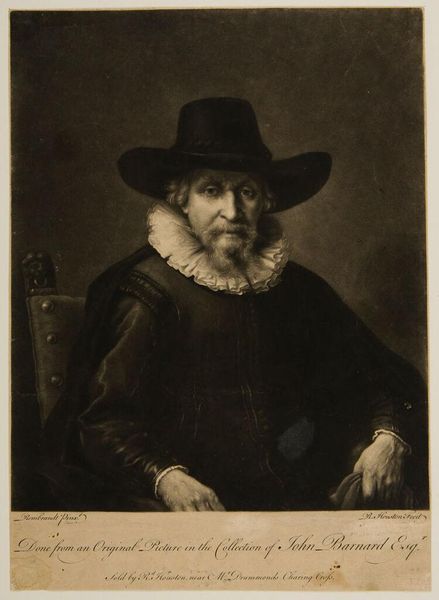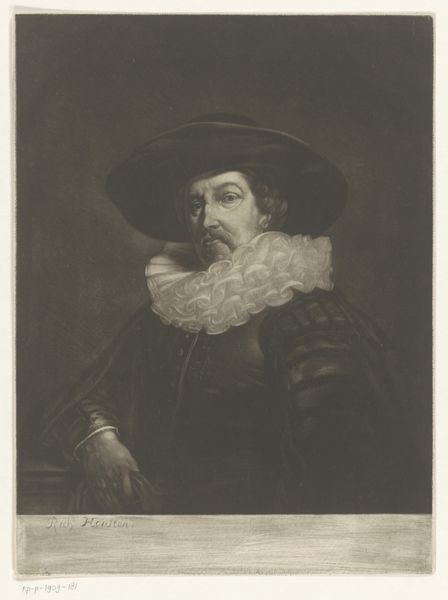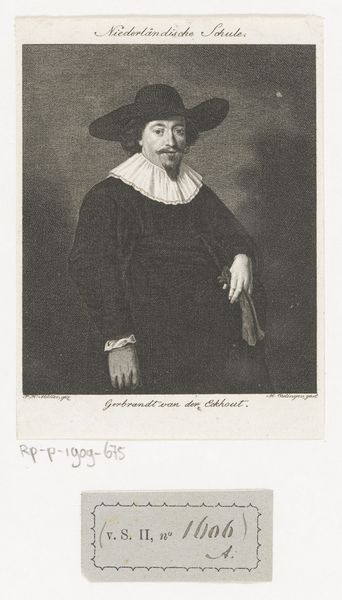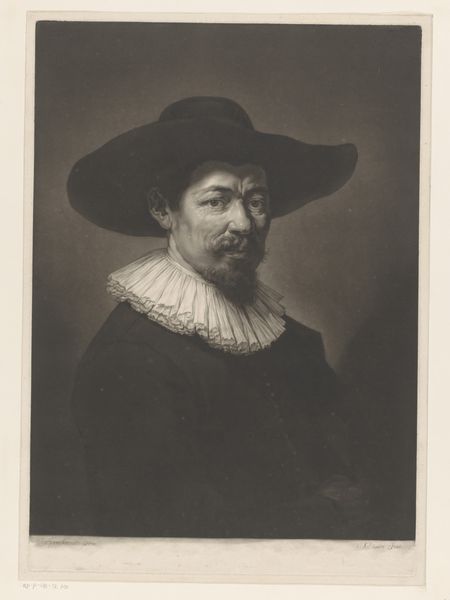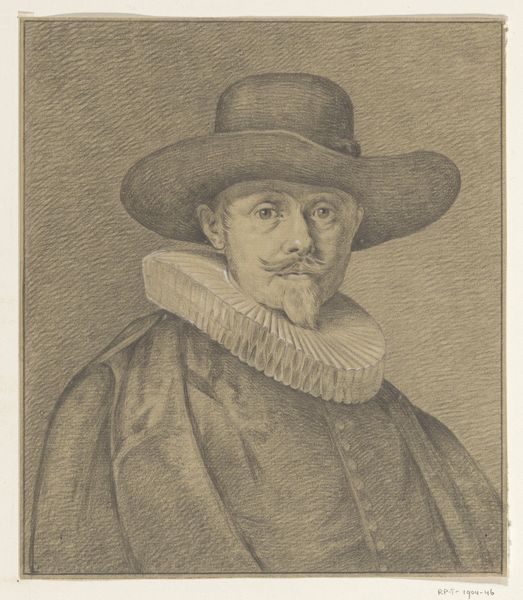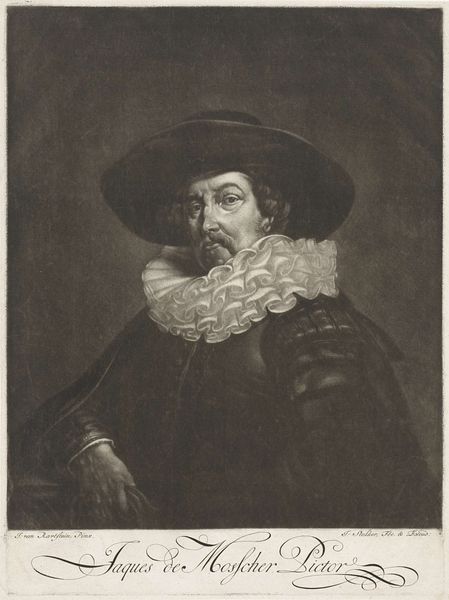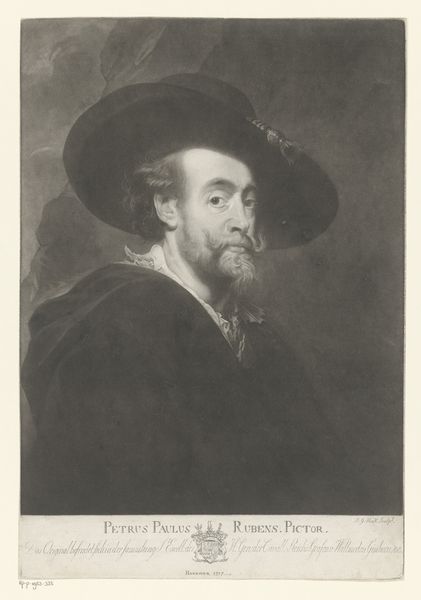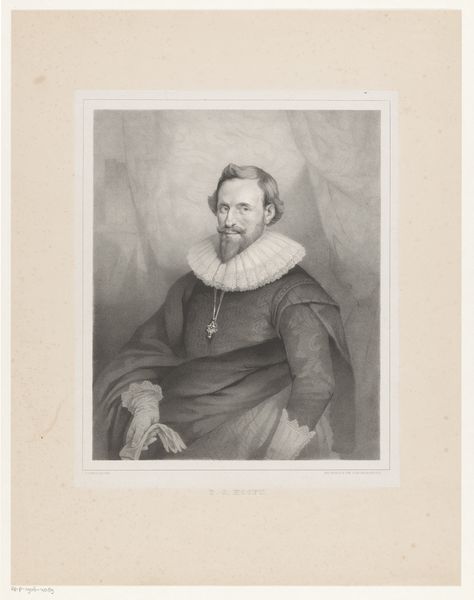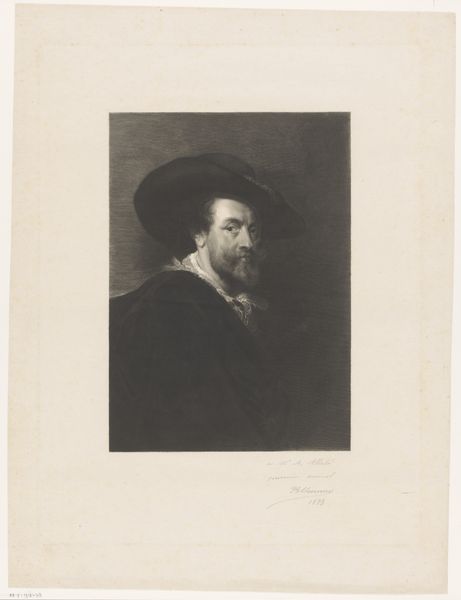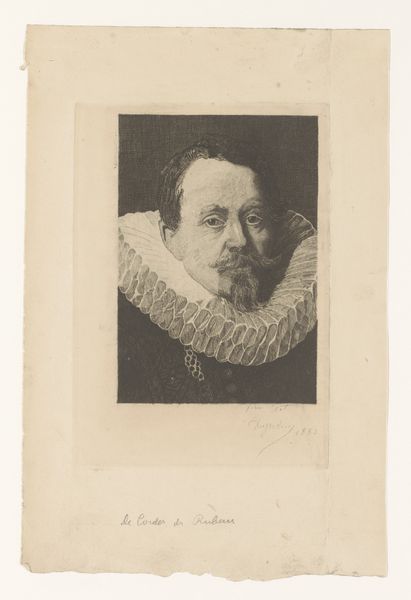
#
wedding photograph
#
photo restoration
#
photo element
#
charcoal drawing
#
archive photography
#
historical photography
#
portrait reference
#
strong emotion
#
framed image
#
19th century
Dimensions: height 350 mm, width 252 mm
Copyright: Rijks Museum: Open Domain
Curator: Here we have "Portret van een burgemeester," or "Portrait of a Mayor," attributed to Richard Houston and believed to have been created sometime between 1731 and 1775. Editor: It strikes me as a study in contrasts, both visually and emotionally. The dark hat and clothing, set against the brightness of the ruff, create a dramatic division, as does the somewhat stern expression of the subject. Curator: Yes, and the contrast is vital to understanding its form. Notice how Houston deploys a mezzotint technique, creating tone through carefully gradated surfaces rather than explicit lines. Observe the subtle textures defining the face, achieved with such nuance in the rendering of light. Editor: Indeed. I see in that ruff—that brilliant circle of white—more than just fine fabric. The ruff, historically, speaks to a certain status, a belonging to the upper echelons. But there's something about the mayor's bearing, the set of his jaw... I wonder about his burdens, the psychological weight of governance in that era. Curator: And note the hand; the fingers slightly flexed. Here we have an important visual cue, offering psychological access to the depicted. This is where the surface—the mimetic realism—becomes truly compelling. Editor: I agree. That hand seems to suggest unease. Perhaps he feels trapped within the prescribed costume, yearning for release from those obligations. The hat—ominously dark, shielding him—acts almost like a lid, containing something turbulent. Curator: Well said. Thinking structurally, though, it is important to regard how the darkness of the hat directs our line of sight downwards, focusing attention, and serving a clear purpose within the portrait’s aesthetic architecture. Editor: I’ll admit that the interplay between visual elements and cultural symbols lends the piece an incredible psychological depth. I find myself pondering the weight of leadership on individuals, regardless of era. Curator: Ultimately, considering the aesthetic qualities along with your informed considerations, the work serves as a strong demonstration of the potential of formal structure intersecting societal meanings in portraiture. Editor: It leaves me pondering those perpetual questions, about power, about civic duty, about the masks we all wear. A successful journey, I would say, into the symbolic heart.
Comments
No comments
Be the first to comment and join the conversation on the ultimate creative platform.
